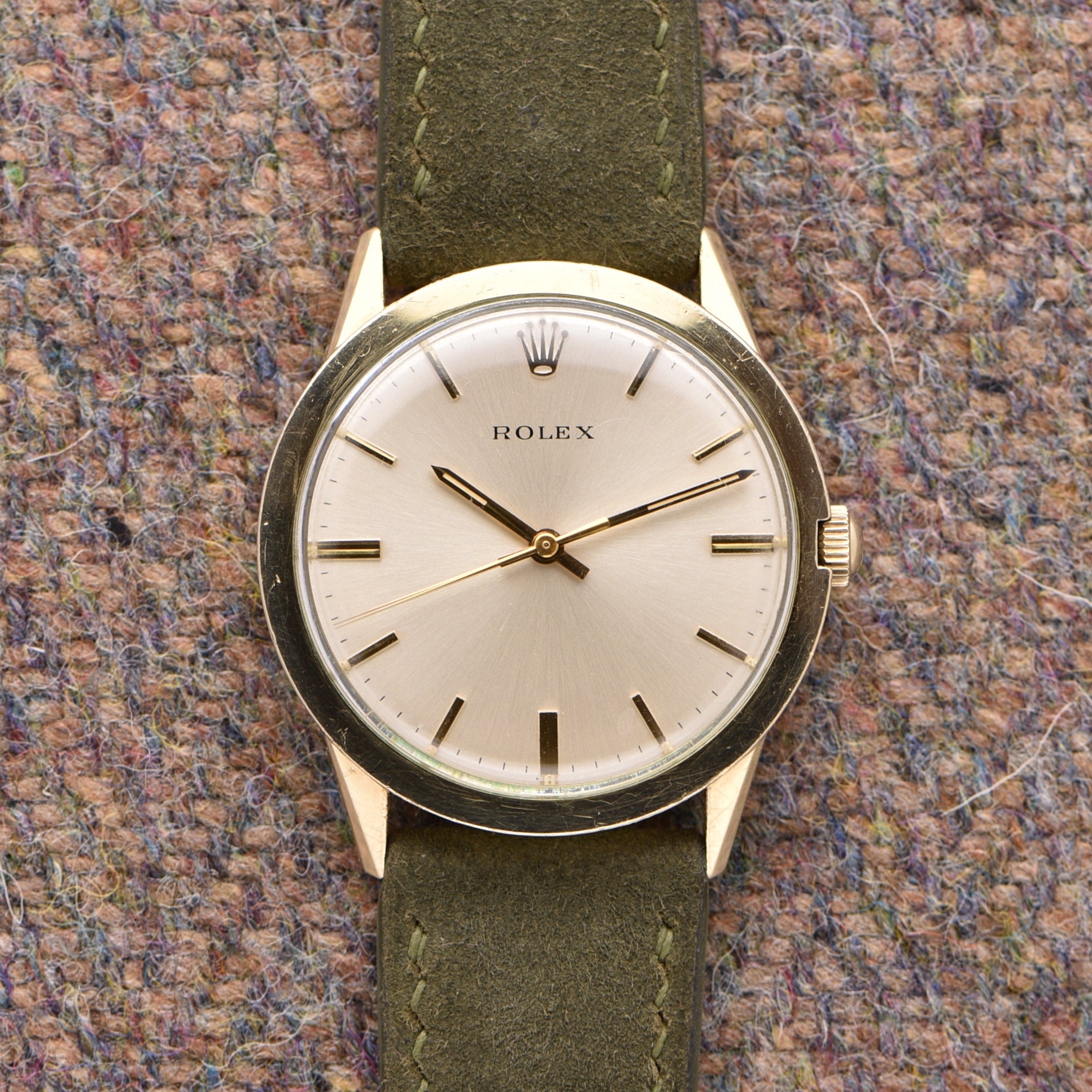
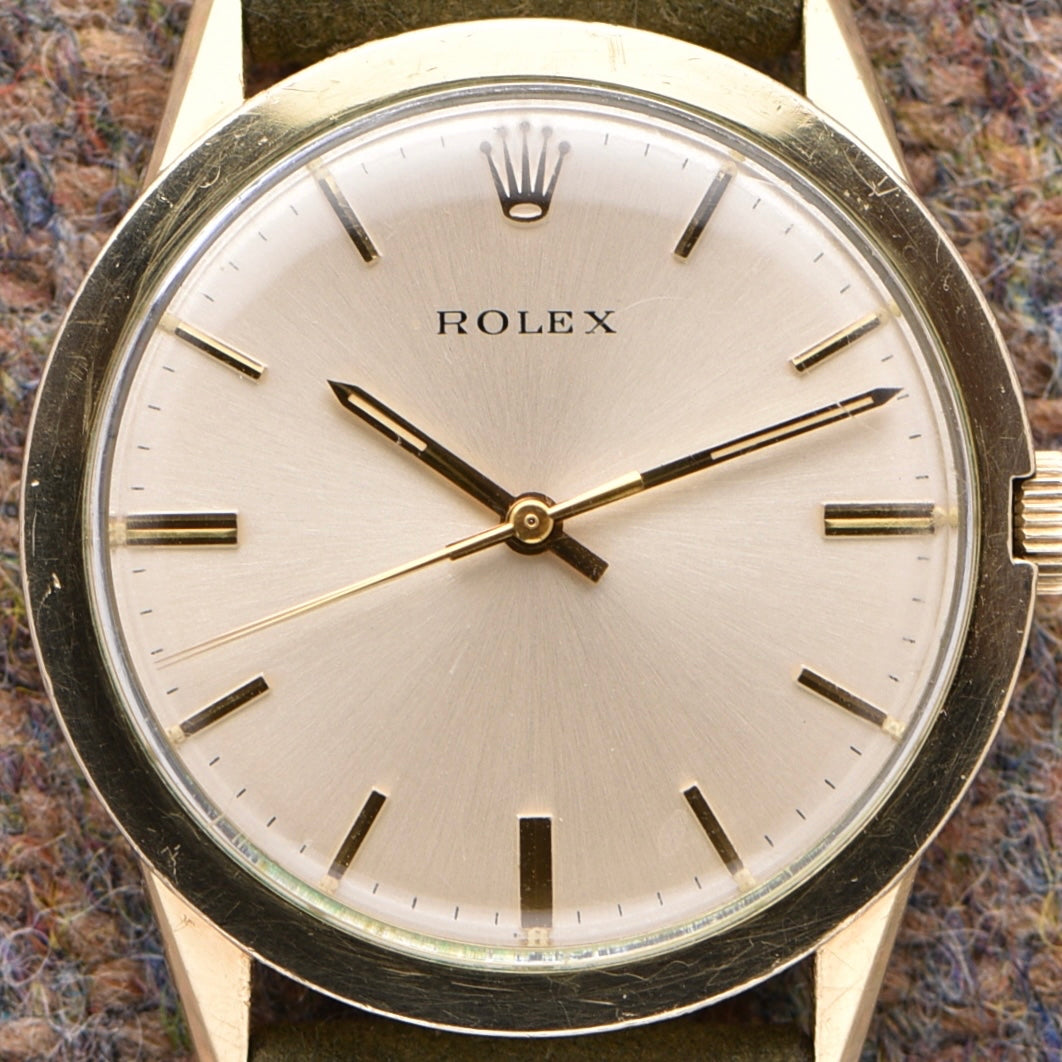
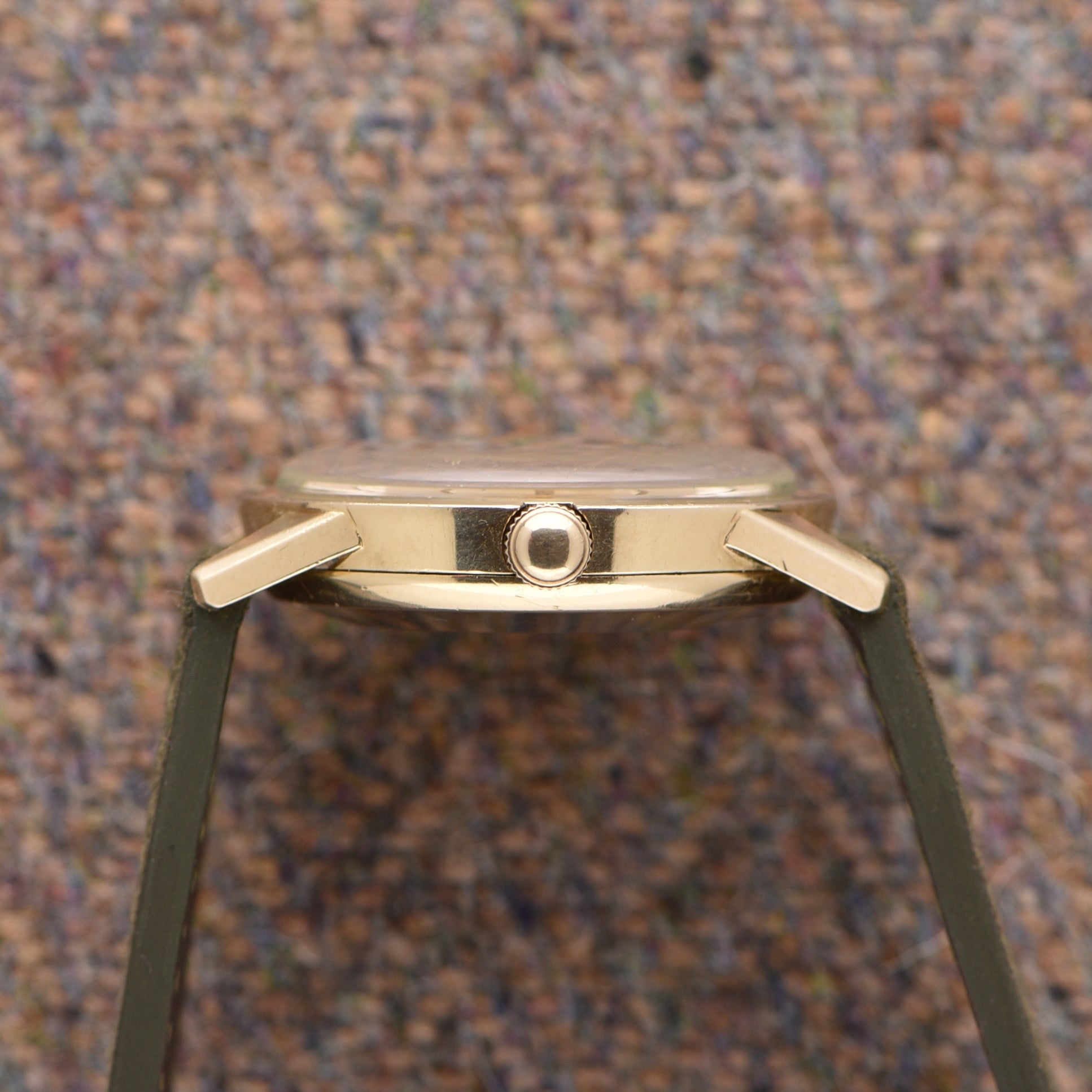
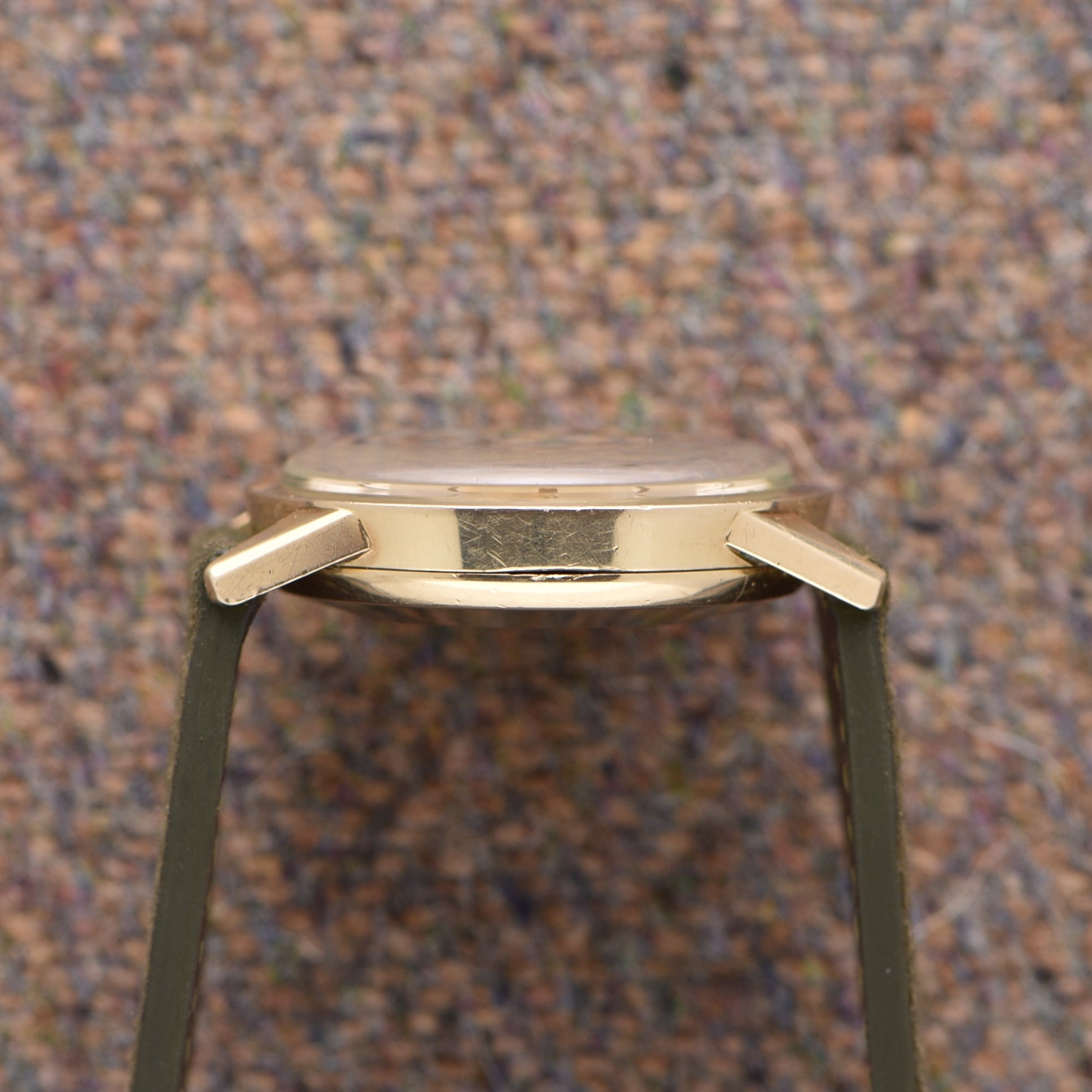
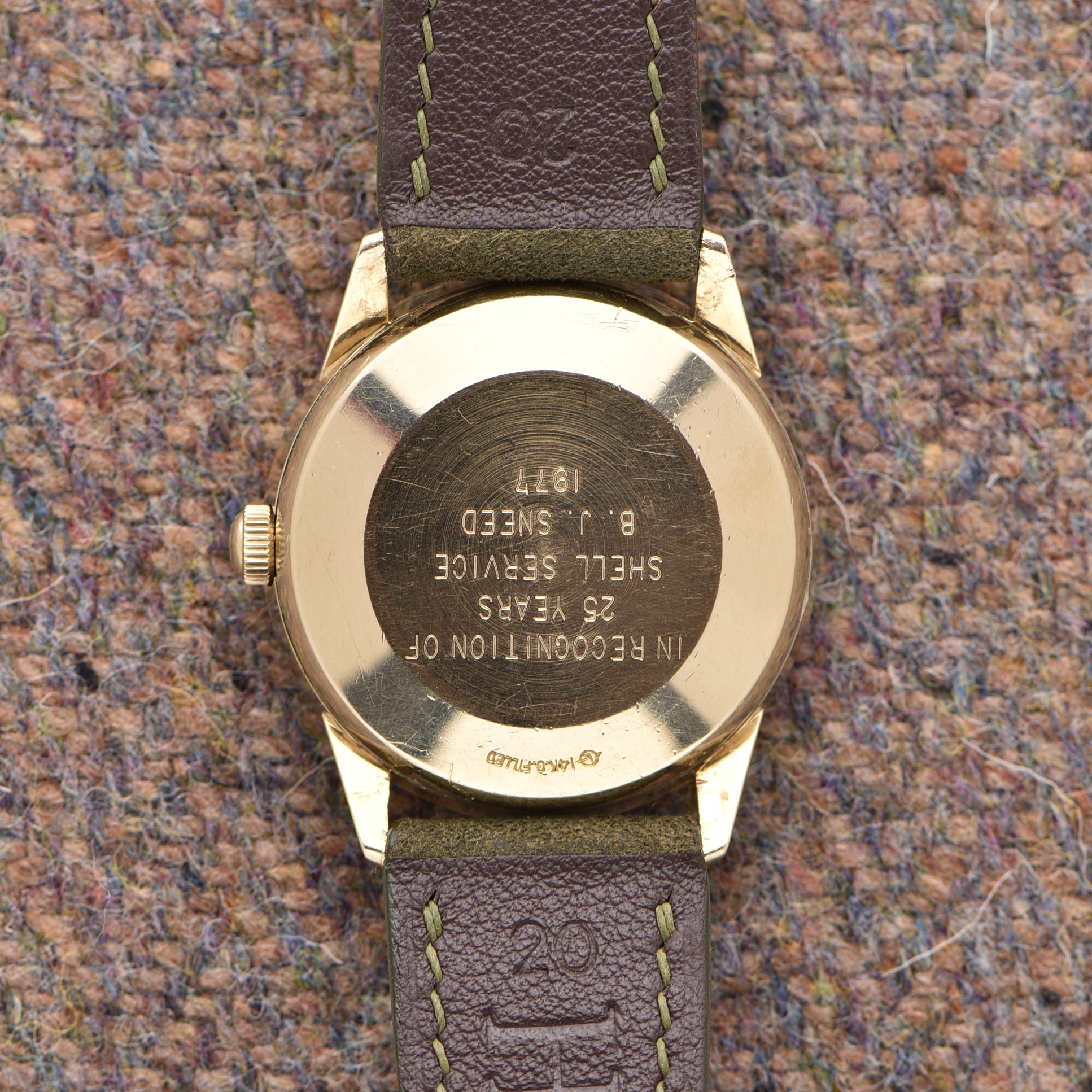
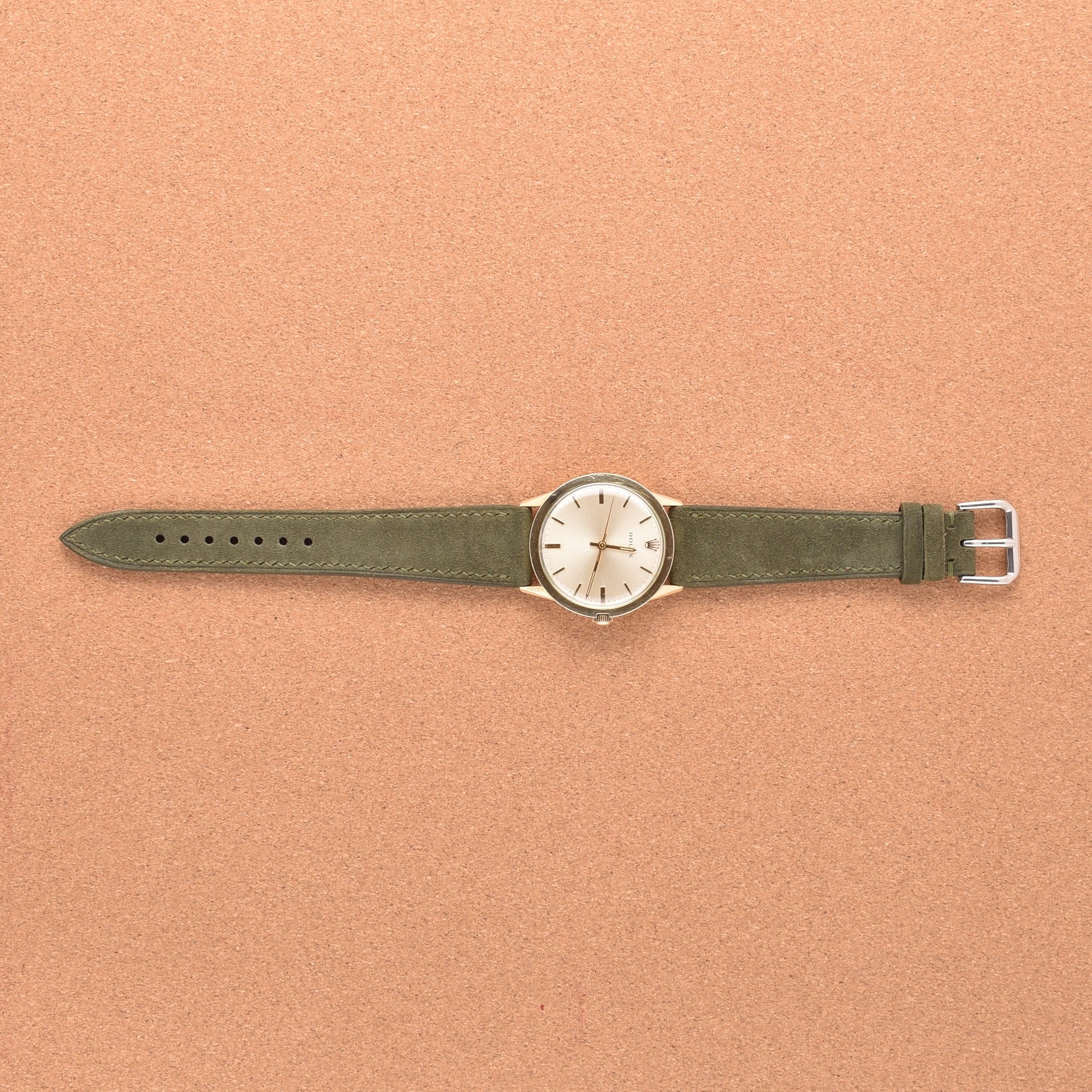
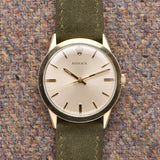

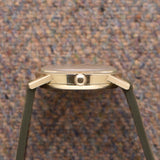
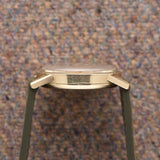
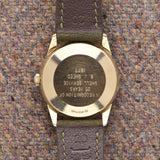
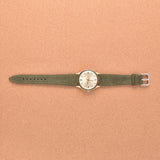
1977 Rolex Dress Watch - Automatic
- Reference 7002
- Watch Only
- Specifications
- The Story
- The Brand
Year: 1977
Model: Time-only
Case Diameter: 35mm
Lug to Lug: 43mm
Case: 14k Gold-filled
Condition: No significant wear as seen
Dial: Champagne
Movement: Automatic
Condition
The case is unpolished with sharp bevels and a nice bezel. The unsigned crown is original to the 7002. The dial is very clean with original tritium lume and the same goes for the hands. The automatic caliber 1530 is in great shape and has been recently serviced. The watch has an engraved case back from Shell in 1977 and comes on a Huntington Company Strap.
The story of the 7002 is not one you would think would be a part of the Rolex Brand History. The reference was produced in the 60s and 70s but only for the US Market and specifically for commercial use. What does this mean? It means that the watch was only sold to corporations as presentation watches. For example, gifted to employees after a certain amount of years working at the company. This also means the reference 7002 was never sold to the public making it one of the rarer models coming from Rolex.
It was meant to be a simple watch, a more affordable option for businesses to gift employees. With that being said, what you have is a 35mm gold-filled case and not solid gold. However, surprisingly, the watch came with an automatic movement and not manual. All of them featured a simple champagne-tone dial with just the Rolex logo and name and a non-signed crown. The only variations you will find with these models have to do with the companies that purchased them. Some can be found with company logos on the dials, others with just engraved casebacks. Rarely can you find an untouched model with only the Rolex branding and no engravings.
The movement inside is also still in-house as a Rolex should be. It is the caliber 1530 which is an automatic movement with a self-winding rotor. This is the same movement you would find in most oyster Perpetuals and the no-date Submariners from the same era. That means this movement is no slouch, and just like any other Rolex, it's a workhorse.
Wilsdorf & Davis was initially a watch importer, but by 1908, Wilsdorf had registered 'Rolex' as a trademark. The name was chosen after trial and error, with some believing it was taken from the phrase 'horological Excellence' or because the word sounds like a watch being wound. Wilsdorf was aware of the power of branding and began a long campaign to get the new company name on the watches he exported. The relationship between Rolex and Aegler started the same year that Wilsdorf & Davis set up the business, placing the largest order for wristwatches ever seen. Wilsdorf was attracted by Aegler's commitment to the highest quality, as their movements were extremely accurate and small. In 1910, one of Rolex's models won a First Class Chronometer Certificate from the rating office in Bienne, Switzerland, and in 1914, another piece became the first ever wristwatch to be granted a Class A Chronometer Certificate from the Kew Observatory in England, the only non-marine timepiece to ever achieve it. The firm of Wilsdorf & Davis became synonymous with a commitment to uncompromising excellence.
WWI in 1914 led to the rebranding of Wilsdorf & Davis as Rolex in 1915. The British government imposed a 33.3% tax on luxury goods, forcing Rolex to relocate to Bienne. Despite the war, the wristwatch proved its utility, as it was used by soldiers during combat and in the field. Rolex produced trench watches, using Aegler's small movements for wearability. By the end of the war, wristwatches became a utilitarian accessory for men. In the years between the wars, Rolex asserted its independence, partnering with Carl F. Bucherer to resist the Federation of Swiss Watch Manufacturers. In 1926, Rolex introduced the Oyster case, making wristwatches waterproof, dustproof, and robust. Wilsdorf capitalized on this innovation by installing Rolex Ambassadors, or 'Testimonies', with celebrities as a marketing masterstroke.
During WWII, Switzerland retained its neutrality, meaning that it was one of the few countries not forced to shut down watch manufacturing to supply the war effort. As a result, by the end of hostilities, the Swiss watch industry was way ahead of other nations. Rolex truly came of age in the 1950s by launching some of the most enduring legends in watchmaking, such as the Explorer, Submariner, GMT-Master, Day-Date, and Milgauss.
The quartz crisis of the 1970s and 80s forced the company to change tactics but ultimately repositioned itself as the purveyor of the ultimate luxury lifestyle. Today, the name Rolex is synonymous with refinement, opulence, and personal accomplishment. The Rolex brand as we know it today is the byproduct of an unrelenting drive for excellence and over a hundred years of refinement and development, all in pursuit of the brand’s singular goal of making the world’s best wristwatch.
1977 Rolex Dress Watch - Automatic
Authenticity Guaranteed
All our watches are carefully inspected to insure and guarantee the authenticity.
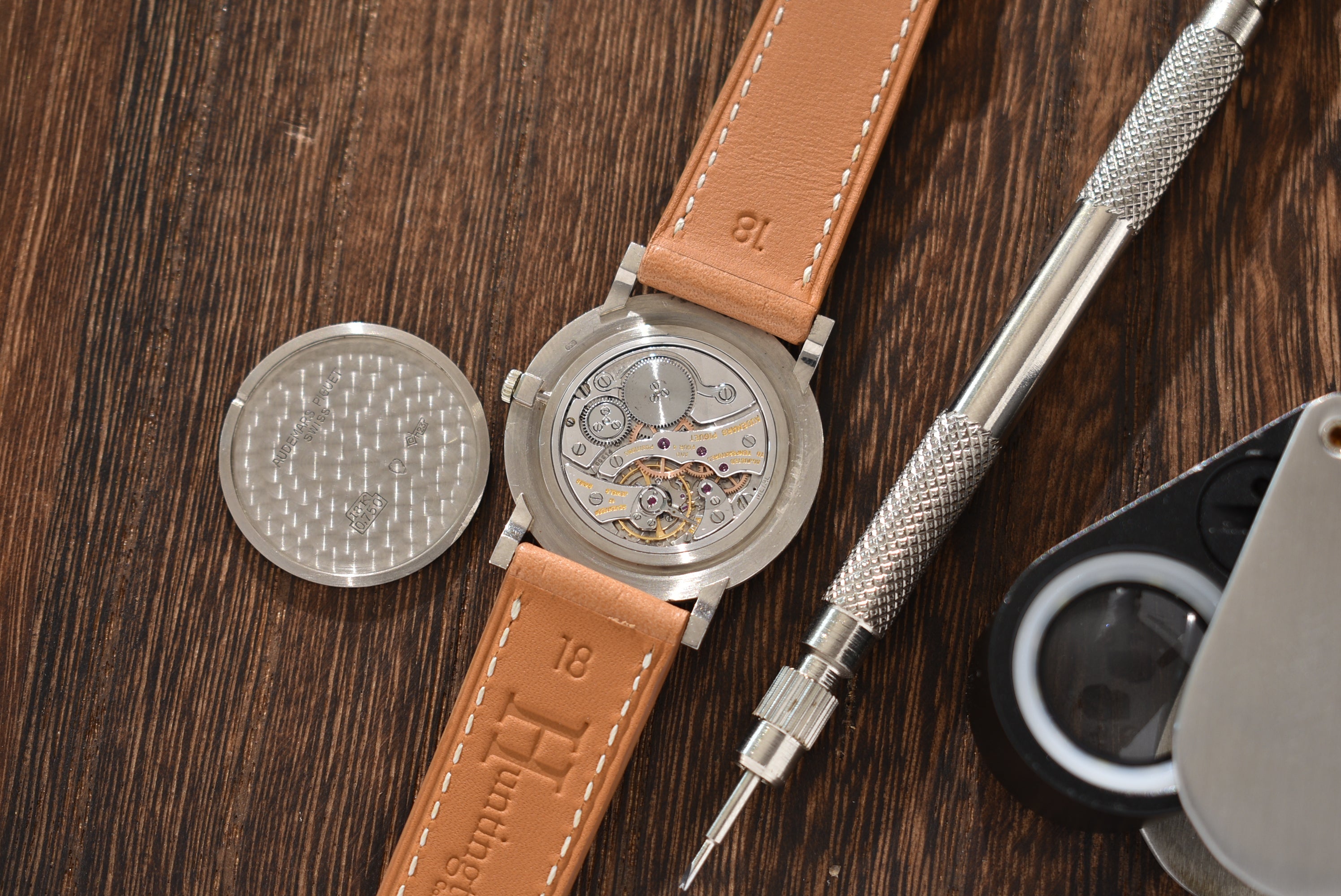
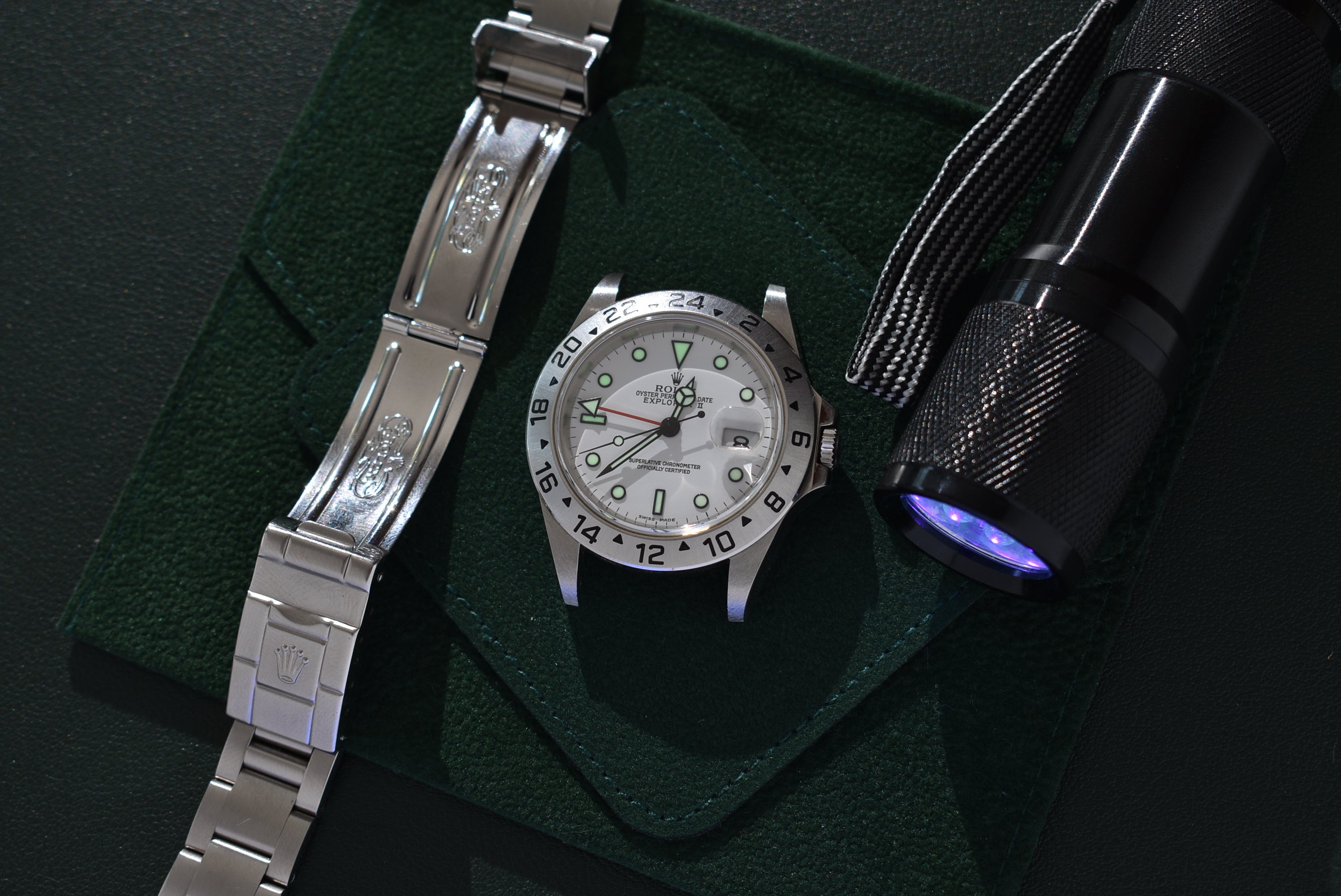
The Details
All our watches are scrutinized during inspection to make sure our descriptions are as accurate as possible.
- Related products
- Recently viewed
